Things rarely happen the way you planned, that’s is why improvised trips are never disappointing. My visit to the Museu de la Tècnica de L’Empordà last summer was full of unexpected events. It all worked out at the end, but I need a second and less troublesome visit in the future.
Many of you have probably read this thread on Twitter from Marcin Wichary, who is among other things a researcher on the history of keyboards. That’s is how I got to know about one of the most important exhibitions of typewriters in the world.
I was planning to spend a few days in Girona and just before I travelled there, my friend Álvaro, who is also passionate about typewriters sent me a message. He had just moved from Rio de Janeiro to Barcelona and he wanted to visit the Museu de la Tècnica. He suggested going together. It was perfect timing! We would meet in Figueres, the town where the museum is located. Everything fit together until the day of our visit.
Things get complicated here, so I will keep this part short.
PLAN:
– 9.30 a.m. Álvaro and Ana take the train from Barcelona. They miss the train.
– 10.00 a.m. Ángel and I depart from Girona on his motorbike. The garage keys are missing.
– 11.30 a.m. We all meet in Figueres. No one is there at that time.
WHAT ACTUALLY HAPPENED:
– 11.30 a.m. They take the train in Barcelona.
– 11.35 a.m. We take the train in Girona.
– 12.06 a.m. We arrive at Figueres.
– 1.30 p.m. They arrive at Figueres.
Ángel and I planned to come back to Girona for lunch so I decided to go and visit the museum by myself and meet Álvaro and Ana at the train station before we leave. After following some confusing directions from Google Maps we got there, we were at the entrance of the museum. ‘Oh-oh, the door is closed’. We got closer and read a note saying that the museum is only open for 3 hours in the afternoon. ‘No way’. I decided to stay until the afternoon to meet Álvaro and Ana and finally visit the museum.
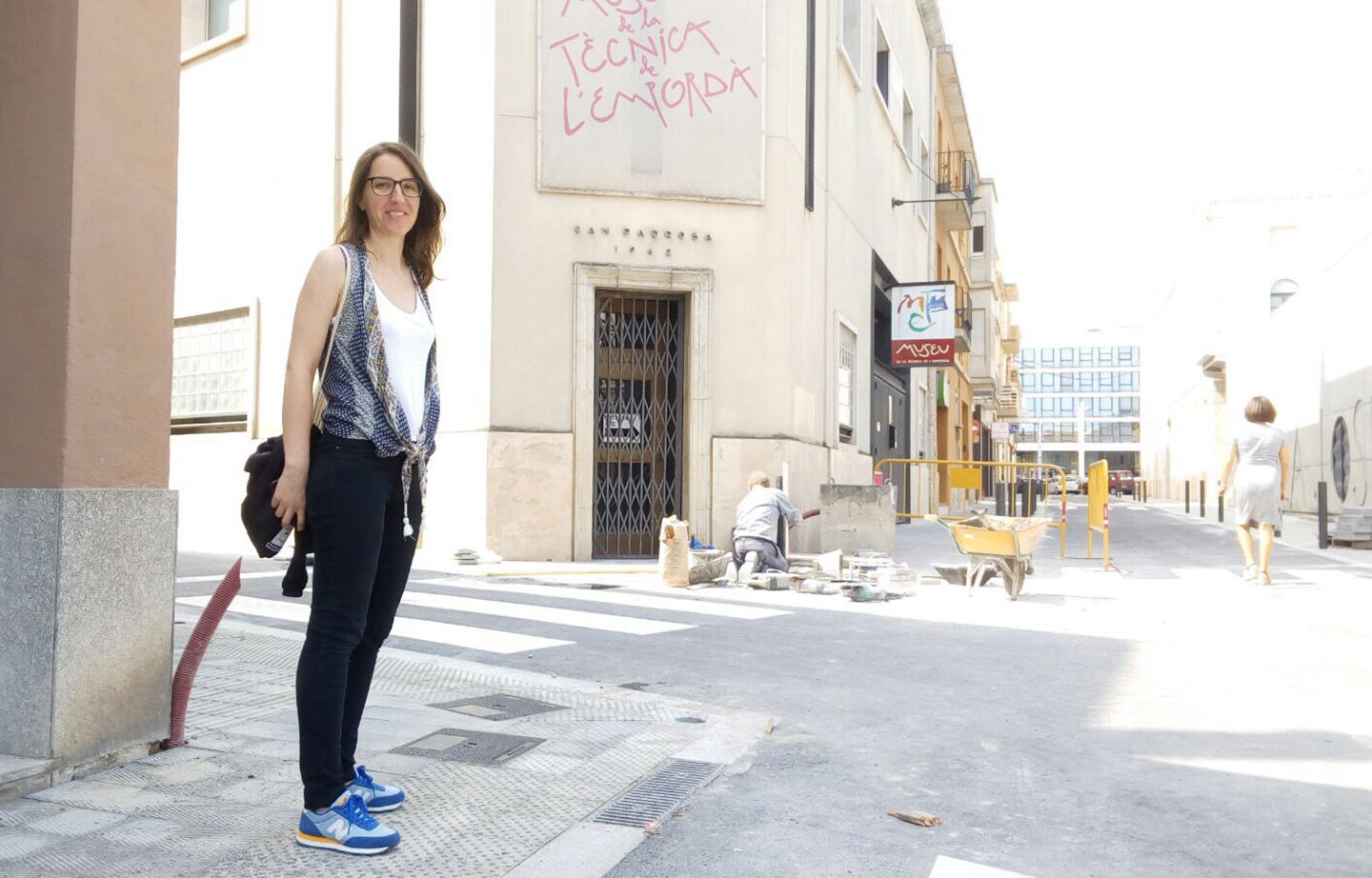
My friend insisted in documenting our unfortunate beginning of the day. There I am, in front of the closed doors of the museum, not a very impressive building from the outside.
After a good meal, some walking and a lot of talking we — Álvaro, Ana and me — finally entered the museum. I had about 1 hour before the departure of my train back to Girona — believe me if I say 1 hour is not enough for this exhibition. Margarita, a nice lady of about 75 years-old was our guide through the collection. Her husband, Pere Padrosa, who stayed at the reception desk, started this huge collection a few decades ago.
The exhibition is divided into 3 floors. The top one is completely dedicated to typewriters. The first floor is for sewing machines and a handful of Comtoise clocks. The ground floor is an area full of different historical objects, cash registers, heaters, cameras, telephones, bikes… There is even a car and by its side a cabinet full of old issues of the Michelin guide.
If you ever visit this museum, please do not take the elevator. The walls going upstairs are decorated with posters and other printed material from typewriter companies.
There is so much to tell about what is inside those rooms that I would get lost in the details. Instead of a non-ending text, I will share a few pictures and hopefully motivate you to go and see the exhibition for yourself. I apologise for the poor quality of the images, my camera run out of energy and my phone is not good in poor lighting conditions.
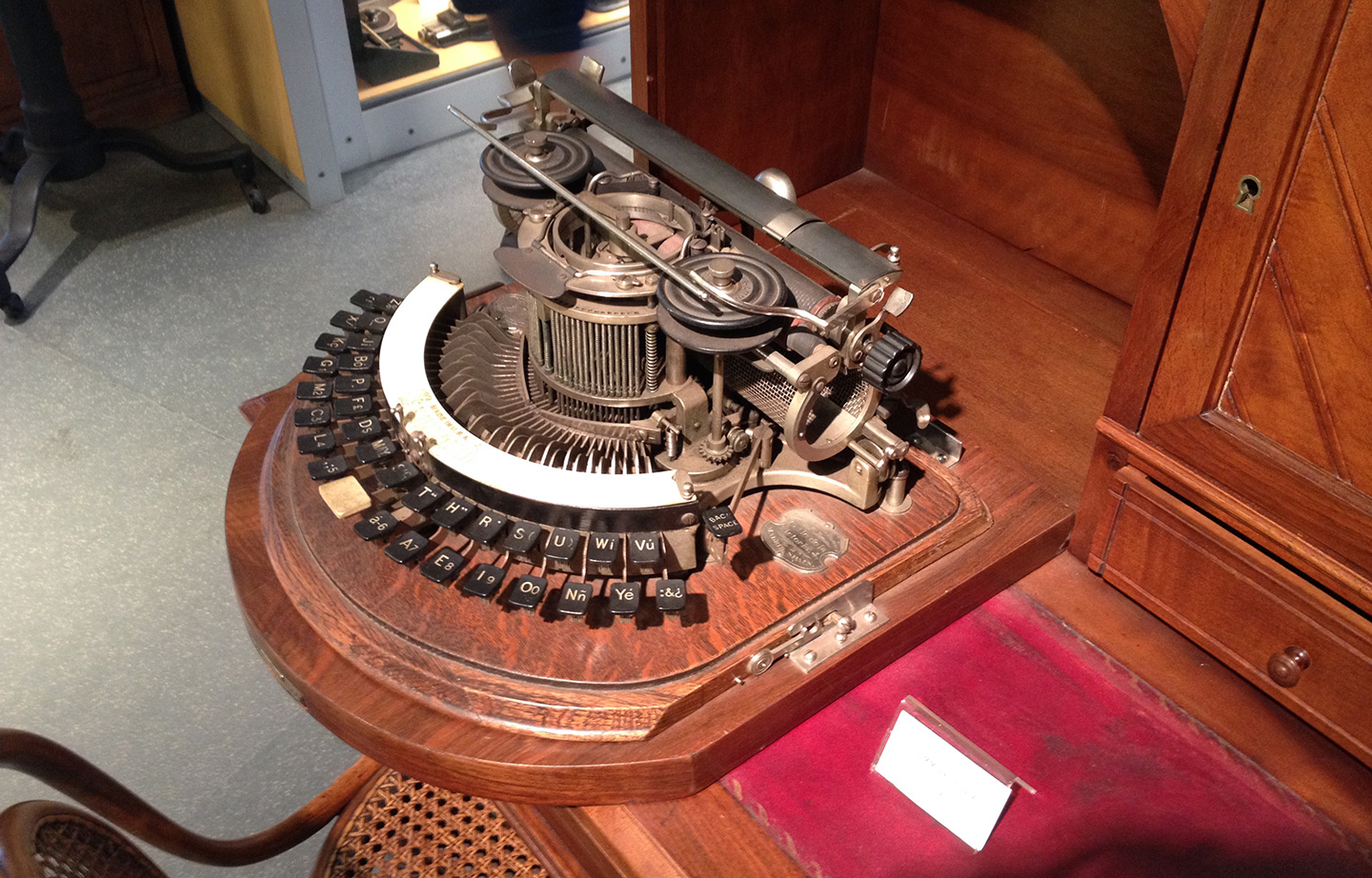
This Hammond 2 (1884) was the first stop on our tour. It was displayed on its own desk. The keyboard in early typewriter models took many different shapes, it was not rare to see the keys arranged in only two rows.
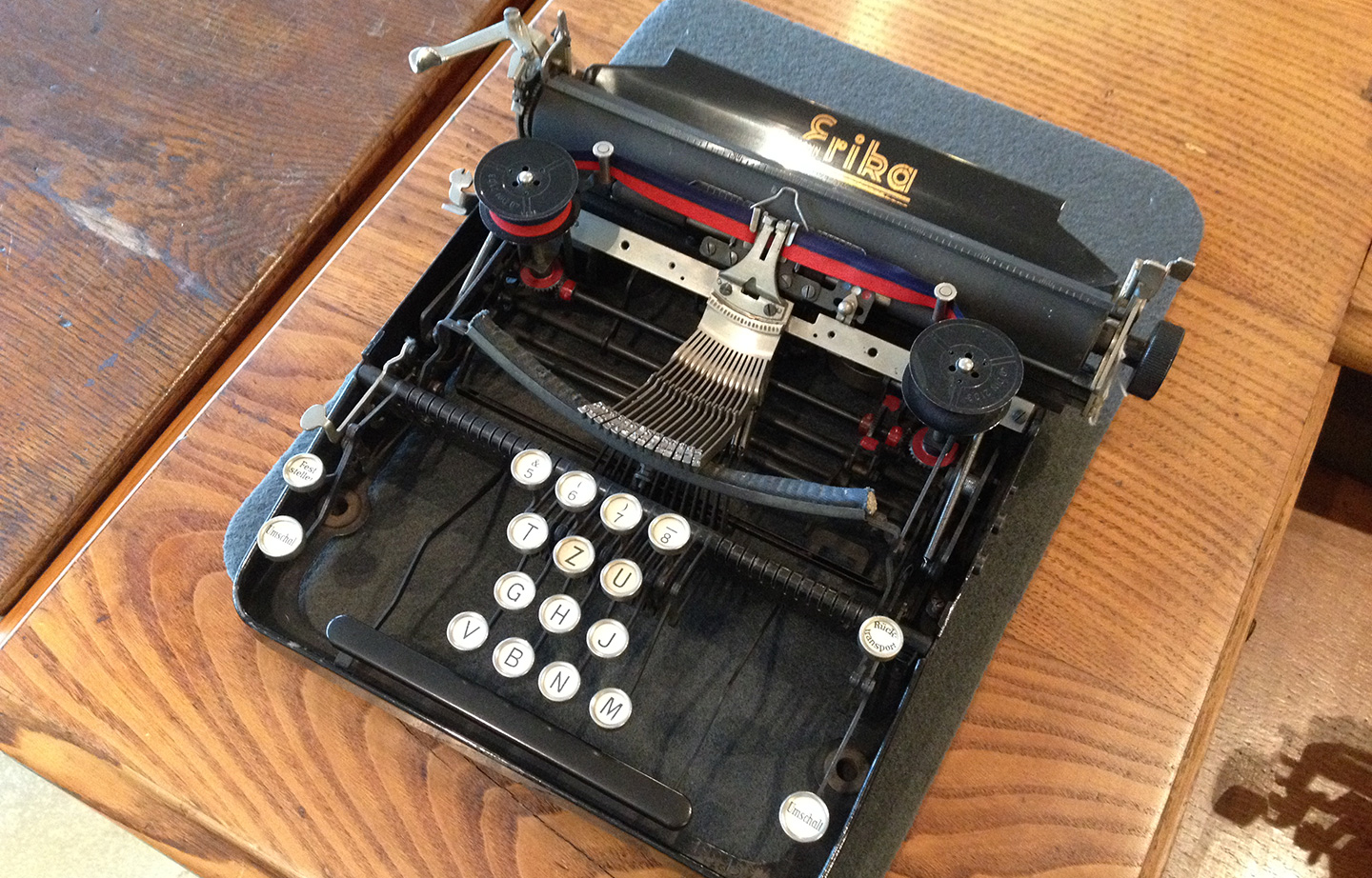
This Erika is a testing model used by the manufacturer for showing the mechanics of the machine.
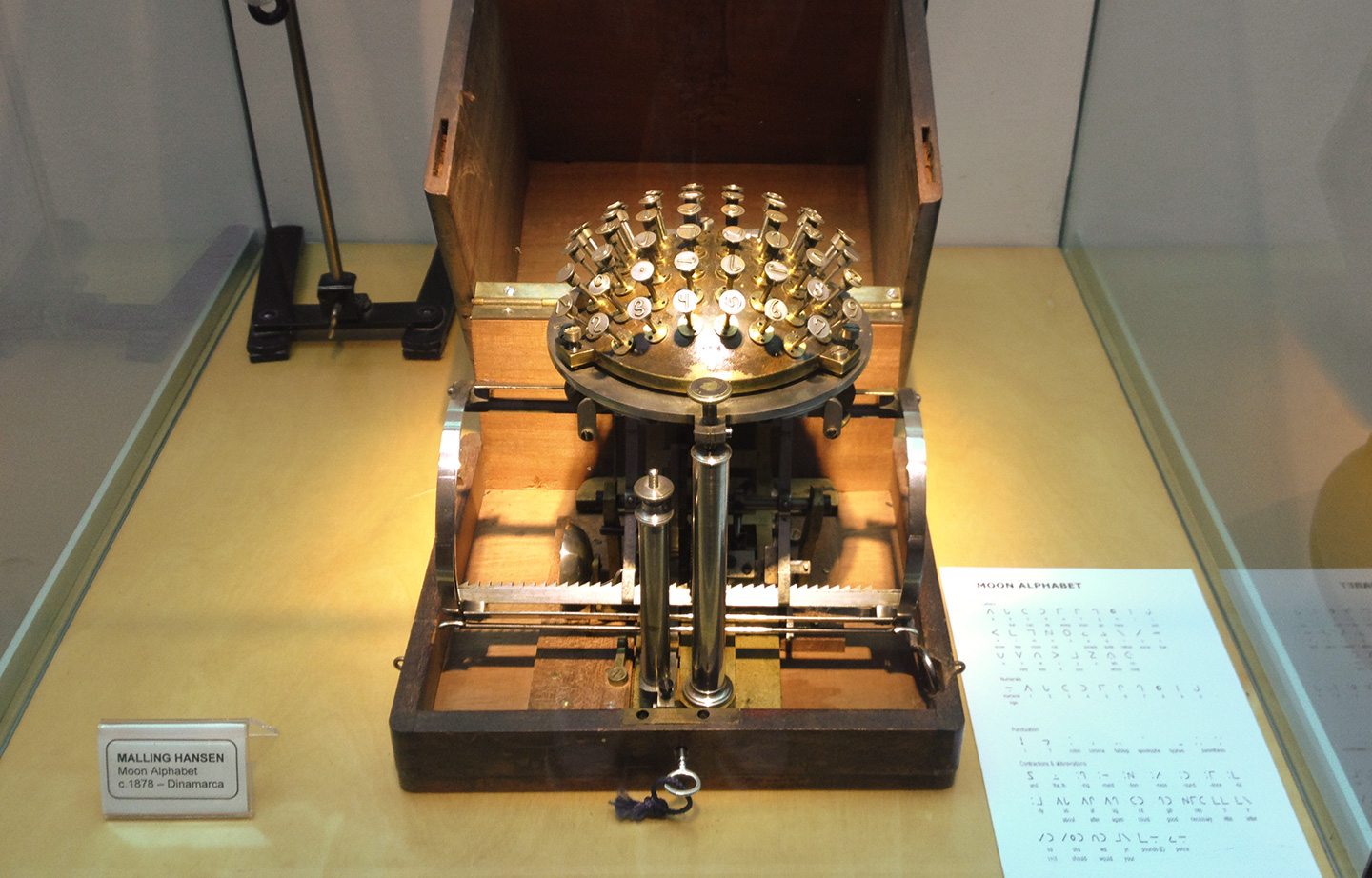
In 1865 Rasmus Malling-Hansen invented the Skrivekugle. In 1870 it became the first typewriter manufactured in series. The model in the picture (c. 1878) is a machine from for blind people that uses the Moon alphabet.

When you have such a huge collection it must be difficult to decide how to put some order. This red corner was a nice display of some models from different manufacturers. In the first row two similar models, Olivetti Valentine and Monpti. They were both designed and manufactured at a very similar time.
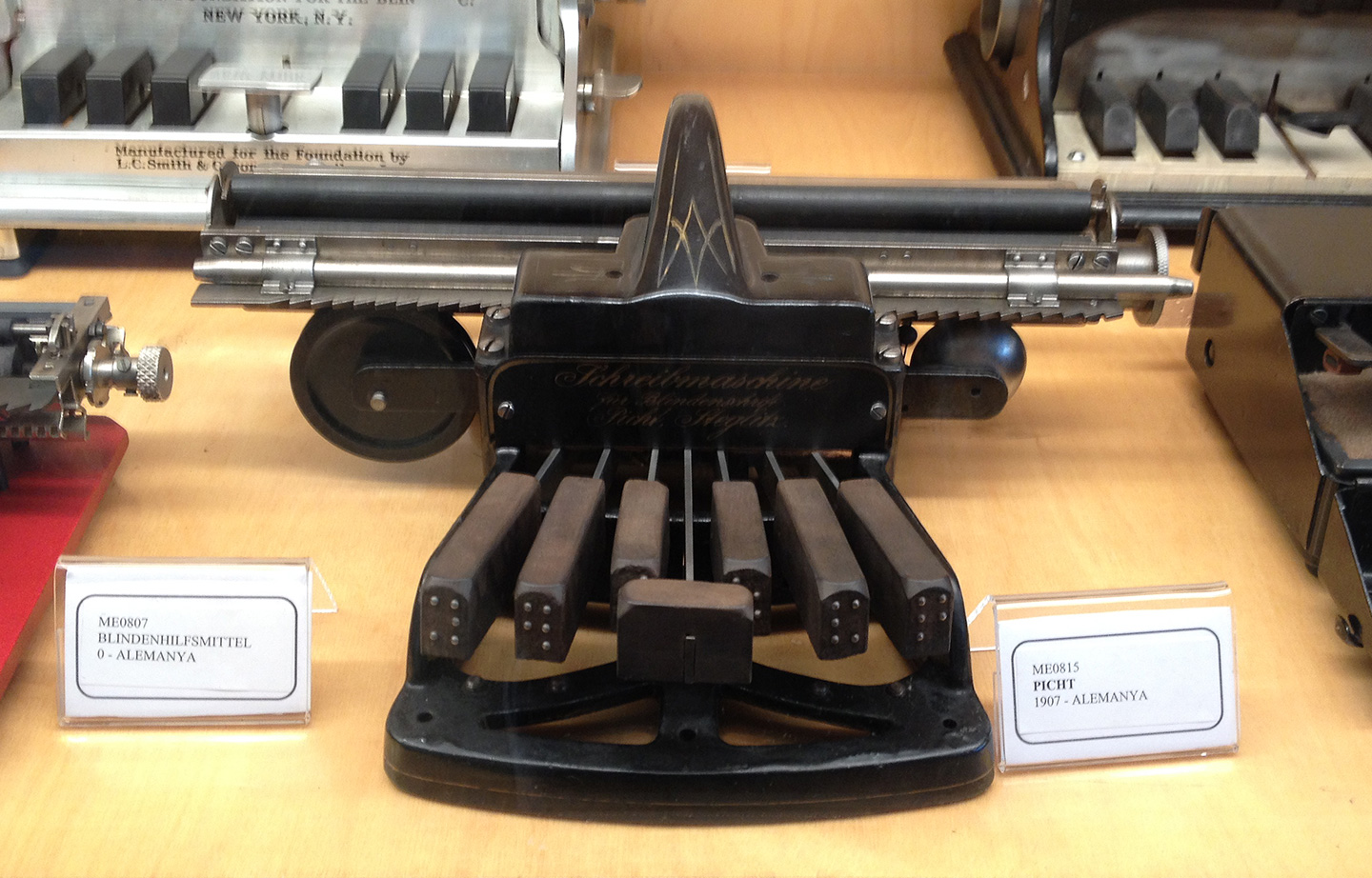
One of the cabinets includes a few models of typewriters for blind people. The one shown here is a Braille model from the German company Picht (1907).
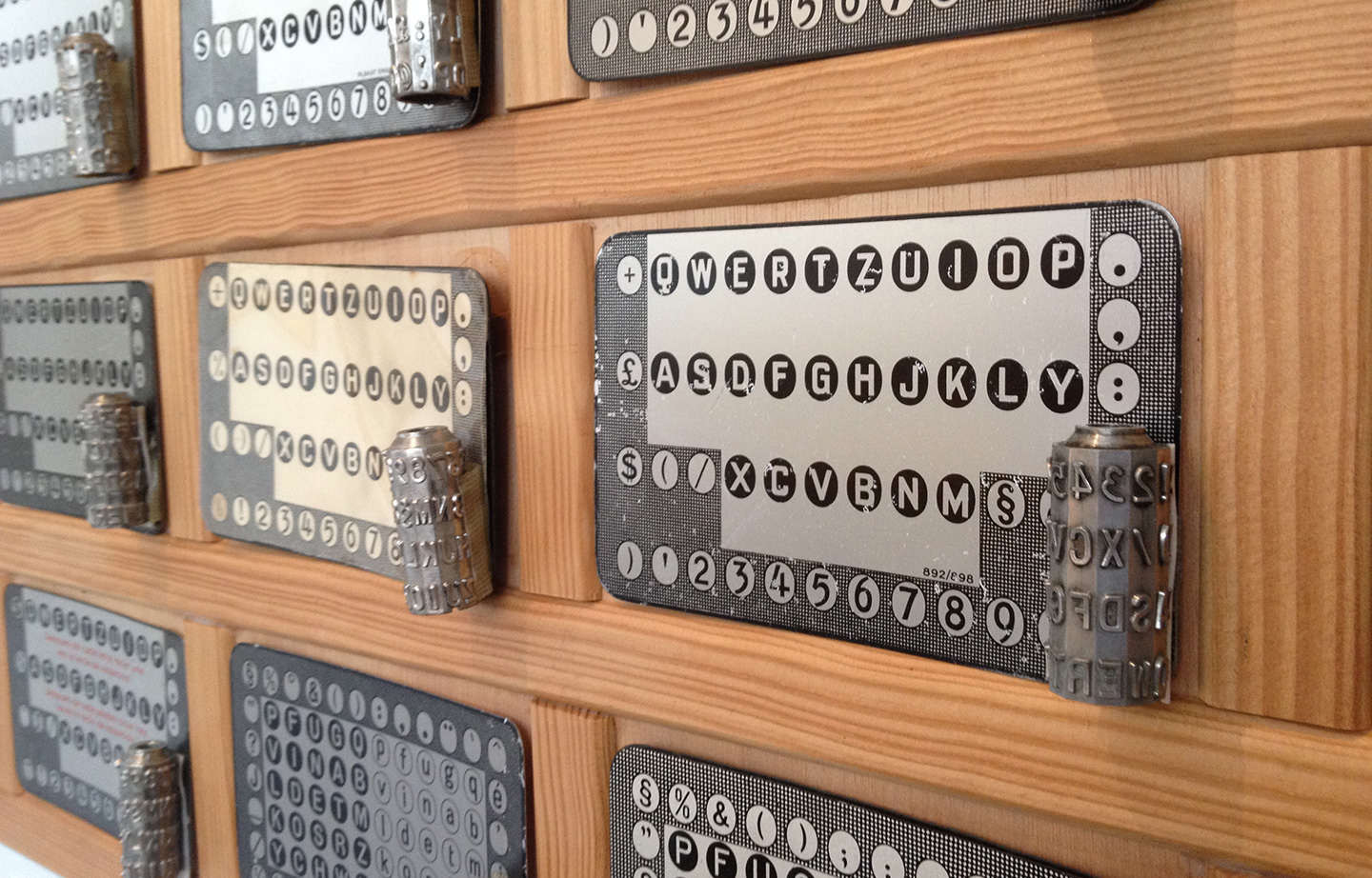
Some models of index typewriters used a metal cylindrical head for printing. We can find different examples of these typewriters in the museum, from early beautiful models like the Minion 2 (c. 1907) to more functional ones like the Tip Tip (c. 1936).
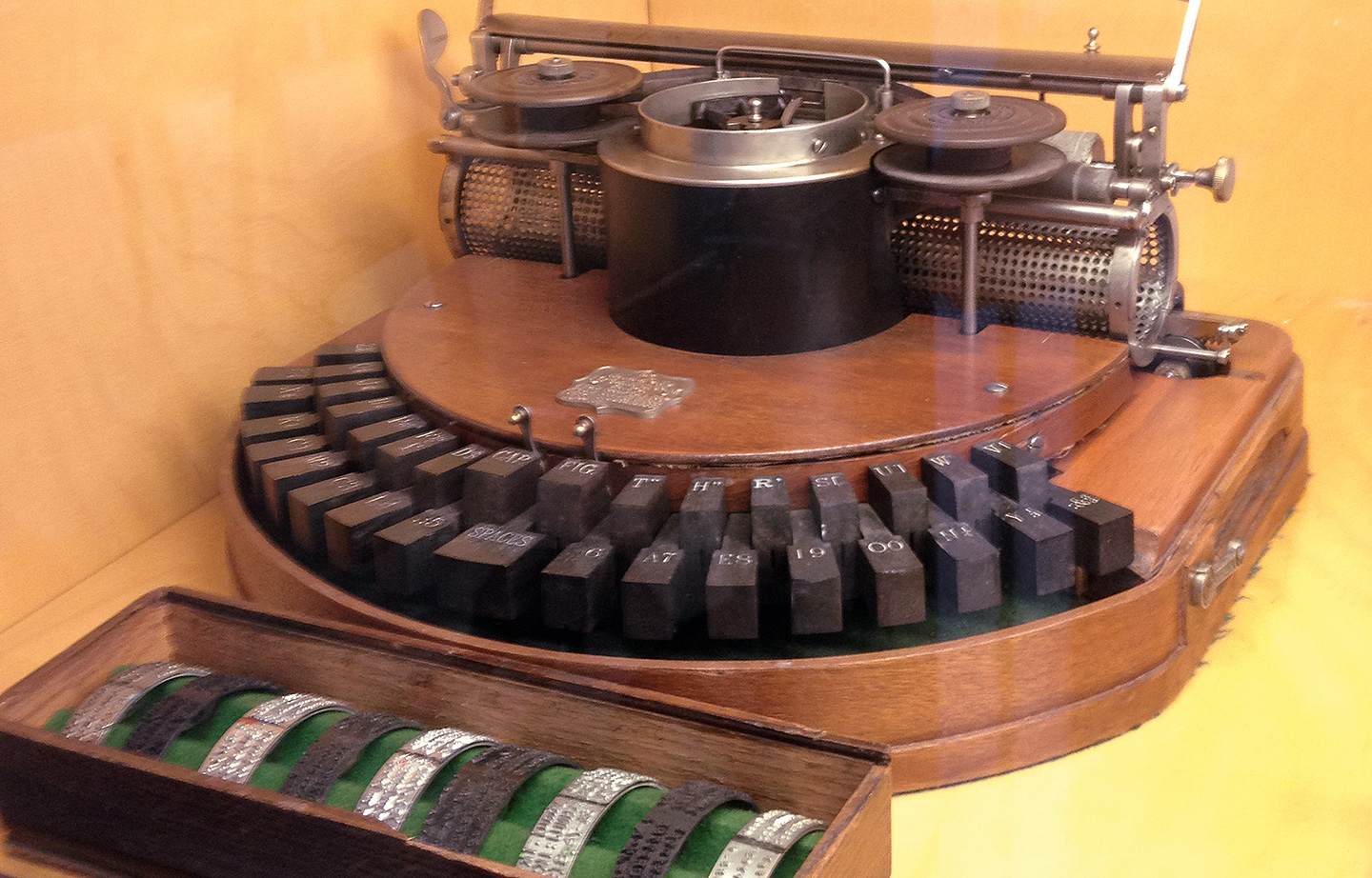
In the early years of typewriter history, manufacturers were trying to improve the functionality of the machine. The arrangement of the keyboard and the printing devices varied a lot. In the picture, you can see a Hammond 1 (c. 1886) and several type wheels used for printing.

The exhibition includes typewriters that support different scripts. In the picture, the keyboard and type bars of a Optima mechanical typewriter (c. 1970) for Arabic.
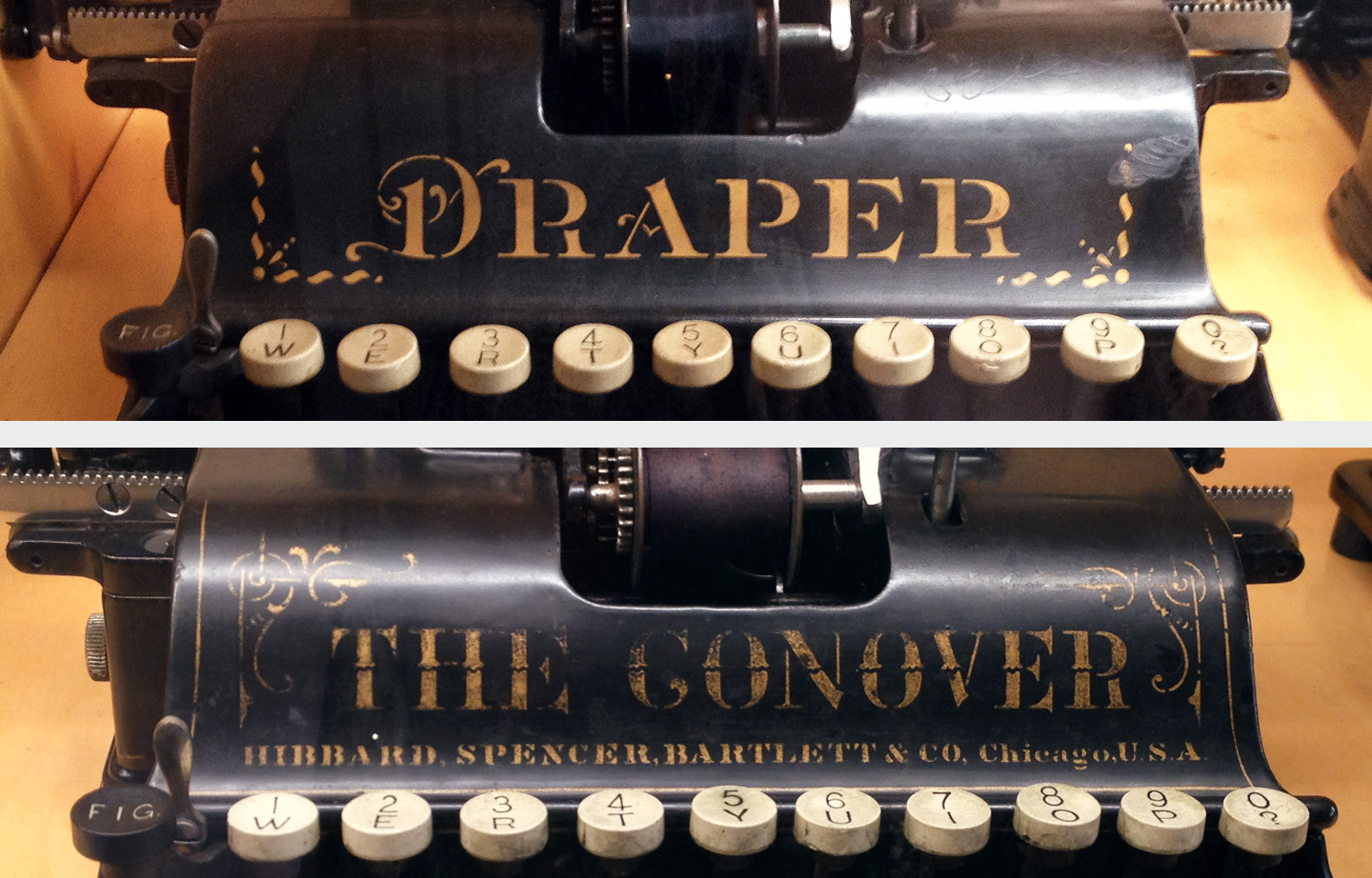
The machines often displayed nice lettering work. The two models shown above are different versions of the Chicago no. 1, rebranded for Sears, Roebuck & Company (Draper) and for Hibbard, Spencer, Bartlett & Co. (The Conover).
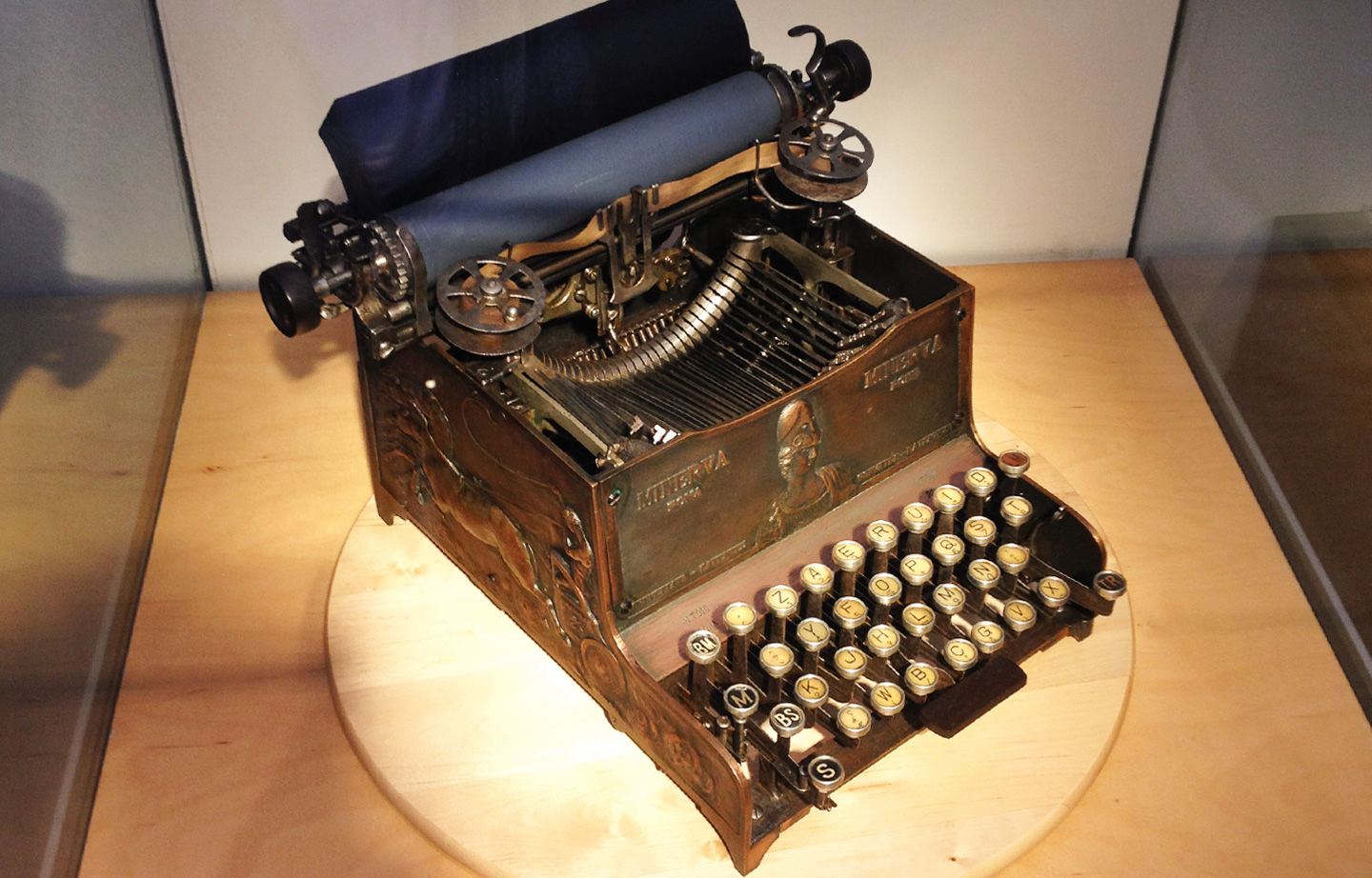
Minerva is one of the jewels of the collection. It is a machine from c. 1923 made of bronze. There is no reference to any other machine similar to this one, it is very likely a unique piece.
I didn’t know where to look at, ‘so much to see’. After the typewriter exhibition, we move to the first floor and went through the sewing machines collection. My phone battery was almost dead, so there are no more pictures from here. We finished our visit right at the entrance, in front of an Armoured Birkigt, a car made by Hispano Suiza in 1908. By the end of the tour, we were an unusual group of people from different nationalities and the speech was a mix of Spanish, French and English.
I highly recommend you to go and visit this museum. If you are not convinced yet, have a look at the virtual exhibition site. You will get a better idea of what you can find there.

Excelente trabajo te felicito !